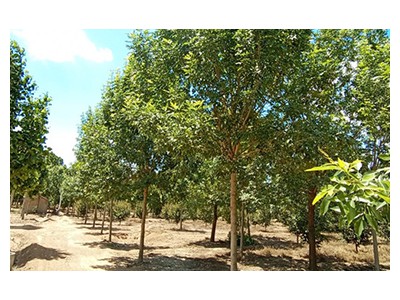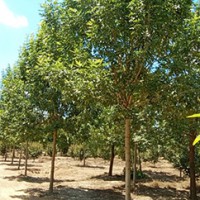The fast-growing white wax is a deciduous tree with an oval crown and yellowish brown bark. Branchlets smooth and glabrous. Odd-pinnate compound leaves, opposite, lobules 5-9, usually 7, ovoid or ovate-lanceolate, 3--10 cm long, acuminate at apex, narrow base, asymmetric, with teeth on margin And wavy teeth, glabrous on the surface, pubescent along the veins on the back. The panicles are born or terminally born on the branches of the current year, large and loose; the elliptical inflorescences are terminal and lateral, drooping, and bloom in summer. Calyx campanulate; no petals. Samaras are oblanceolate, 3--4 cm long. Flowering period from March to May; fruit matures in October. Samaras are flat and lanceolate.
Growth environment: fast-growing white wax likes to be moist, mostly distributed beside the caves and streams, growing fast. Fast-growing pewter has high ornamental value, so in the application of landscaping, fast-growing pewter is also very popular. Fast-growing white wax is an excellent tree species for wind and sand fixation, urban greening and beautification, and ecological construction. Its branches and leaves are luxuriant, the root system is developed, and it grows quickly. It is resistant to drought, waterlogging, cold, salt and alkali, wind, disease and insect pests, and has strong adaptability and dry shape. Straight, beautiful tree shape, normal growth on soil with less than 0.3% salt content.










